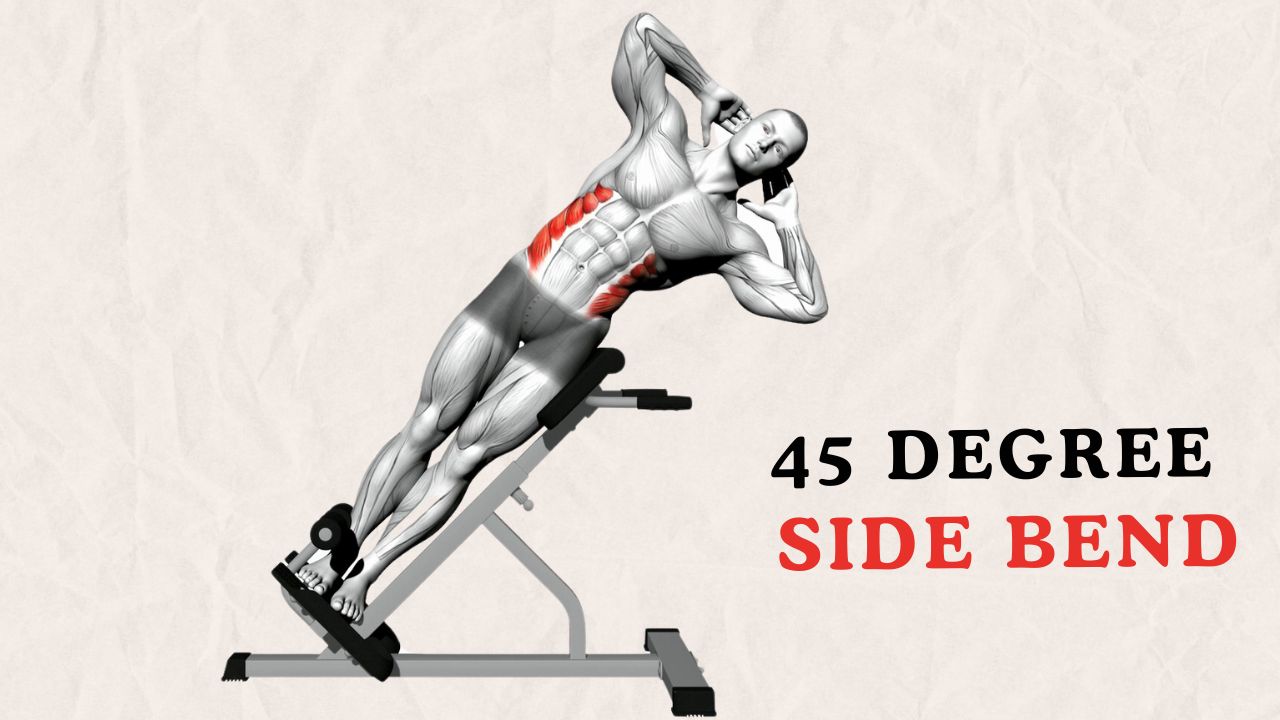The 45-degree side bend, also known as oblique hyperextension, is a great workout for strengthening the oblique, strengthening the lateral flexion of the spine, improving spinal mobility, and helping develop a strong and stable core.
It is commonly performed on the Roman chair, which was originally designed for lumbar extension. It allows you to support your hips and legs against pads and braces, with your trunk free to move.
For an easier variation, you can do a bodyweight side bend, and for the challenging side bend, you can use a weight plate against your chest or behind your head.
If you do not have a Roman chair, you can also perform the exercise on a conventional flat exercise bench; in that case, you need a partner to support your feet.
Other Names: Hyperextension bench side bend, bench side bend
Use our free calculator to know your weight loss calories requirement.

45 Degree Side Bend Muscles Worked
- Primarily muscles worked: Obliques, (the external and internal obliques)
- Secondary muscles worked: Erector spinae and the quadratus lumborum
- Synergist and stabilizer muscles: Rectus abdominis, Transverse abdominis Hip flexors (psoas and iliacus) & Gluteus
How To Do 45 Degree Side Bend
- Adjust the seat of the hyperextension bench so that your upper body can pivot comfortably at your hips toward the floor.
- Rest the side of the thigh on the pads. Properly tense your leg so that it stays in place.
- You can place your hands at your ears, behind your head, or across your chest—whichever feels most comfortable for you.
- Squeeze those glutes and lower your body at an angle. Think of yourself as a human protractor aiming for that perfect 45-degree angle.
- Hold for a second and return to the starting position.
- Complete the desired number of reps and repeat on the other side.
Proper Form And Tips
- Make sure the pad is properly placed against your hip.
- Avoid rotating your torso – keep your shoulders and hips aligned.
- Be careful not to lean forward or backward (only to the side). In other words, move your torso only laterally. Rotating the trunk (or even the hips) to the right or left is the biggest mistake.
- Engage your core to maintain stability and protect your lower back. Avoid rounding your back; keep it straight to promote proper biomechanics.
- If you’re new to this exercise, start with no additional weight. Once you feel comfortable with the form, gradually add resistance (like a dumbbell or weight plate) to increase the challenge.

Known Your Body Fat %: Try Free Calculator To Know Your Body Fat Percentage

Manish is a NASM-certified fitness and nutrition coach with over 10 years of experience in weight lifting and fat loss fitness coaching. He specializes in gym-based training and has a lot of knowledge about exercise, lifting technique, biomechanics, and more.
Through “Fit Life Regime,” he generously shares the insights he’s gained over a decade in the field. His goal is to equip others with the knowledge to start their own fitness journey.
